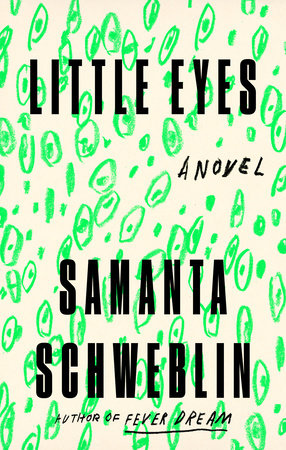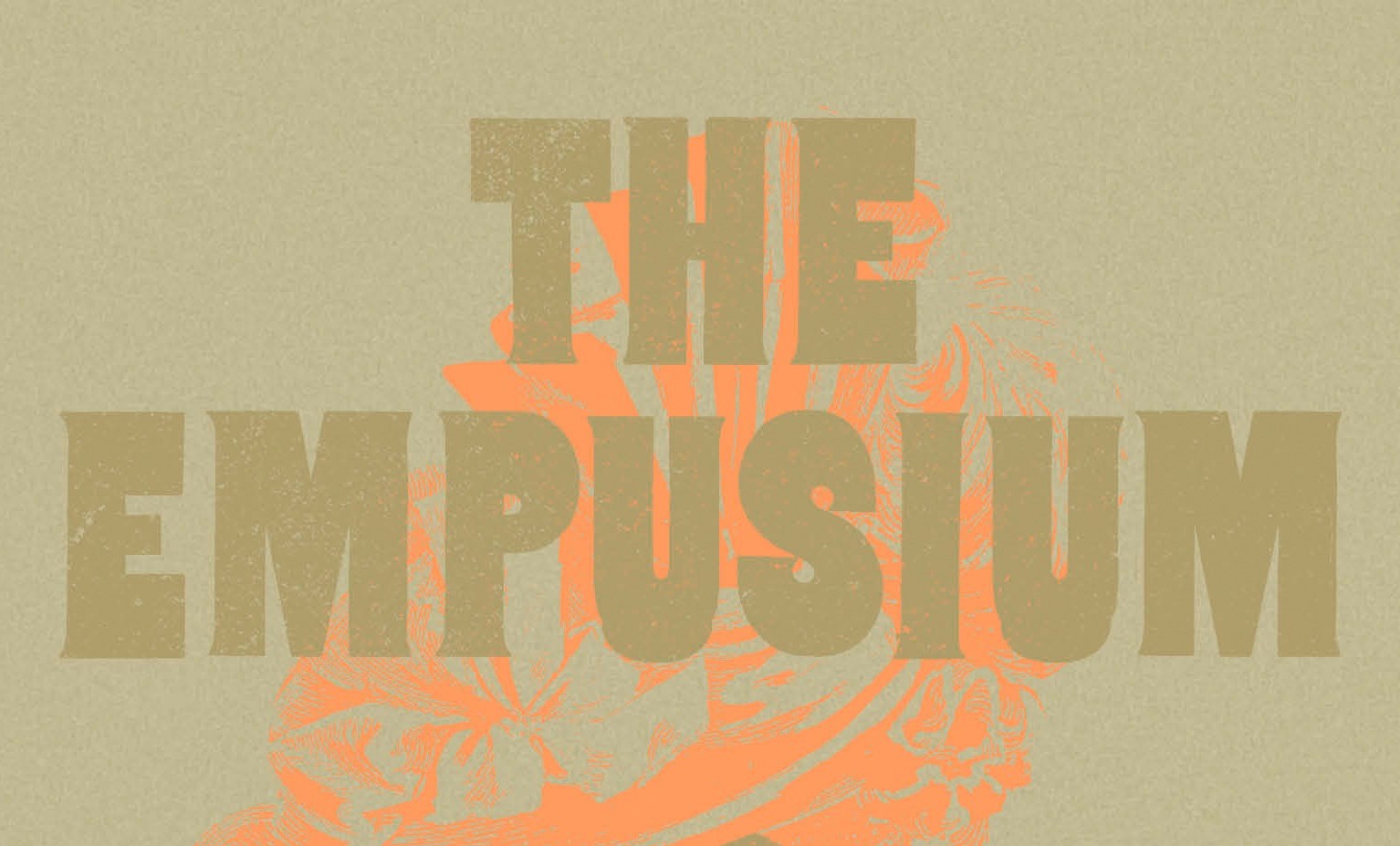interviews
In Samanta Schweblin’s New Novel, The Panopticon Is Cute
In "Little Eyes," people around the world are searching for human connection via webcams in stuffed animals

In Argentine author Samanta Schweblin’s latest novel, Little Eyes, characters indulge in long-distance voyeurism—and exhibitionism—via mobile stuffed toys with built in cameras, called kentukis. Translated from Spanish by Megan McDowell, Little Eyes has some of its characters buy kentukis as pet-like companions in their homes, while others buy connection cards to be inside the soft toys, which take the forms of moles, rabbits, and crows.
The relationship between the kentukis and their keepers couldn’t be further from a normal owner-pet relationship since inside each kentuki is an actual human being, on the other side of the world. The kentukis interact back more than say a cat purring even though their range of communication is limited. Schweblin infuses a large spectrum of human behaviors—jealousy, falling in love, pursuing a dream, murderousness—through the screen and proxy of the kentuki.
Via email en español (with help on the finer points of translation from Rikki Matsumoto) , I spoke with Schweblin, whose eco-nightmare Fever Dream has won raving U.S. fans (including Jenny Offill) about screen intimacy, watching and being watched, and the genius of being old with technology.
J.R. Ramakrishnan: Most of us are used to the idea of being watched by security cameras and by the Internet. The kentukis are the observers of their owners. Could you talk about how you imagined the side of the watchers?
Samanta Schweblin: I suppose I got to this other side of the mirror naturally, because of the type of device a kentuki is, and the possibilities it offers as a literary object. And there is also something about my own fears about our exposure to technology today. For decades, we have been concerned with the idea of technological control in the hands of large companies or states themselves. It was already there, even in 1984 by George Orwell, and any apocalyptic idea regarding the control that can be inflicted at a massive level on citizens seems very genuine to me. But I think we sometimes neglect the power and harm that we, ourselves, as naive and poorly-educated users of technology, inflict on others. It is naive and clumsy harm, yet massive. And that was the place I was most interested in thinking about. I did not intend to think of the technological dangers from an explosive or apocalyptic place, but within the most intimate and personal worlds in which we live. Technology is neutral. It is neither good nor bad, nor interesting in itself. The interesting thing is how it is used, the interesting thing is the people behind it, and the limits to which they can reach or let go.
JRR: The world in which the kentukis exist is transnational and mobile. How did you choose your settings? I understand that you’ve spent time in Oaxaca previously.
SS: At first, I worked with cities that I knew, and almost all of them I knew for literary reasons, because I had been invited to readings or festivals: Lyon, Erfurt, Lima, among many others. And even artist residences: I spent two months in the Italian residence Civitella Rainieri, half an hour from Umbértide by car, and I went quite a bit to the city, so I knew quite a few corners for Enzo’s history. The eccentric artists’ residence isolated on the top of a mountain in the Oaxacan jungle does exist, and I also lived there for three months, almost ten years ago.
But of course, as soon as the novel began to take shape, I had to abandon the eccentricity of working only with known cities. I needed to expand to much poorer or richer, or Nordic, or isolated areas, so I started to venture into writing sites I have never been to. I worked a lot with Google Earth, and even with the spontaneous collaboration of users of forums or social networks who lived near businesses or the houses where my characters were supposedly living. For example, I remember asking a Norwegian man I met in a forum: If there were such a device (as a kentuki), do you think that the device would be able to climb the sidewalk of the street on which you have your own business? I thought the man would never answer, but a few days later, I received a short message: “I’ll check it out.” And a week later, he wrote, “Yes of course there are ramps on the corners of every street, it could climb without a problem.”
JRR: The desire for connection (as well as voyeuristic thrills and much less benign impulses) seems to drive the interaction between the kentukis and their owners. I loved the part when Emilia’s skeptical friend Ines says, “Why don’t you find yourself a boyfriend instead of crawling around on some stranger’s floor?” It made me wonder the same. Could you talk about this preference of this screens-only long-distance connection in the book, and perhaps also in our real world?
SS: I suppose that all distances—geographical, technological, cultural— shape our most effective idealizations and prejudices. And there is also the advantage that, if everything happens within the digital realm, all commitments can be ended with the push of a button.
Regarding voyeurism, I am interested in thinking about it beyond its sexual reading. I think there is something very sincere and beautiful in that curiosity we have to spy on others. In my own experience, seeing others when they don’t know they are being watched, has to do with an almost urgent need to know who I am. He who does not know he is being watched does not act. He is who he is, in his truest way. Are others really happy, those who say they are happy? Do the pains we are so afraid of really hurt that much? I think that if I can catch others dealing with these things in their most sincere ways, I get vital information for myself. I understand better what kind of impact they can have on me. And the kentukis are the eyes wide open to all these truths.
JRR: I was really struck by the connection between older people, the kentukis, and technology. Upon seeing an older woman murmuring to herself in the supermarket, Emilia thinks, “I may be crazy but at least I’m modern.” I imagine in your crafting of the book, the question of age and loneliness must have been very prominent. Would you discuss this?
Technology is neither good nor bad, nor interesting in itself. The interesting thing is how it is used, the people behind it, and the limits to which they can reach or let go.
SS: The older generation, and now I’m just generalizing, are the ones that have been furthest from understanding some technologies. This gives them both genius and a much stronger lucidity than the generations that are already immersed in it can have. They have enough distance to not understand it at all and, at the same time, to see clearly the long list of follies that accompany these technologies. I was interested in that contrast. That added to the fact that old age has always interested me as a literary space. I usually go through it one way or another in almost all my books. I always think of the mistaken idea that, at 20, we have what it will be like to be 40, at 40 what it will be like to be 60, and so on. There is a great lack of knowledge of what old age really is. I remember last year when there were more books like that, that approached old age with such rawness, sincerity and lucidity. I remember reading them and thinking: They should have made me read these in high school. We would all be making much more decent, sensible, and happy decisions.
JRR: I couldn’t decide which was my favorite plot line. I was captivated by the Lyon-based kentuki falling in love with another kentuki operated by the married woman in Taipei but also by the unabashed hustle of Grigor who trades in offering a choice of handpicked kentuki connections in Zagreb. He says, “Ultimately, people loved restrictions” but even he is a little turned off by the end after what he sees. The desire for love and money, both very human drives, are acted through kentukis literally in the affair of the Lyon-Beijing-Taipei duo, and through them as commodities. Could you tell us about how you imagined these two plot lines? Both are extremely intricate and the Lyon-Beijing one is a bit heartbreaking!
SS: Grigor’s story was there almost from the first draft, because it seemed important to me to have a character who could get involved with this technology in a more calculating way, just to take advantage of it. Possibly Grigor’s is one of the characters who, without knowing it, does the most damage, and for that reason I wanted to have him very emotionally attached to me, that I, as a possible reader, understood that in his same situation perhaps I would have made the same decisions as he did, and I could see how he was led to dark places through actions and decisions that might have seem sensible.
I wrote the Taipei-Beijing story practically in one sitting, like a story. I wanted a love story, but I had never written one, so I thought it would be the one that would bring me the most trouble. Also, it happens in two cities that I don’t know, in three languages and two cultures that I don’t know well, everything really was out of my comfort zone. In fact, the first drafts were riddled with foolish and unforgivable mistakes regarding the cultural customs or idiosyncrasies of each city. But then I assigned readers for each story in the book, which helped a lot with these kinds of details. My Chinese publisher, for example, was following this Taipei-Beijing story closely, a Croatian friend was following Grigor’s. A Peruvian writer from Lima, German friends from Erfurt, and so on.
JRR: The book is only set in the U.S. for a few pages but we are reminded of it in the name of the kentukis and Alina names her kentuki, Colonel Sanders. Would you discuss the naming and how you considered capitalism in this novel (especially in light of Fever Dream)?
He who does not know he is being watched does not act. He is who he is, in his truest way.
SS: The name just appeared during the writing of the first draft and it stayed there for a while. Then I googled “kentuki” and found that there are cities in Australia and Ukraine that bear that name. Also a traditional Japanese food, an American rifle, a famous Russian race horse. I wanted that, a name that sounded familiar, and at the same time different in some cultures. I made a list of things that I wanted the name to reflect or invoke. I wanted a name that sounded cheap, popular, that resonated as something already known, already heard, and also something almost funny, and greasy too. I suppose that some of this in turn reflects the capitalist ideas you were asking about. All the answers always led me back to the name “kentukis,” so that’s how it turned out.
JRR: I must admit I felt like you had looked into my life, certainly in the broad strokes of Alina’s story (though not in the more distressing details) since for a brief period, I lived in Oaxaca with a former artist partner. Your rendering of the relationship between two artists was intensely done. I won’t spoil it for the reader but Sven’s final act is shocking. But isn’t the type of theft he commits, what all artists do for “material”?
SS: It can be. I suppose that writers are also always looking and listening to everything hungrily for material. Although sometimes it can also work as a shield. In moments of pain, or fear, sometimes I find myself taking a distance and wondering, will this help any story? Perhaps what we call “our virtues” are nothing more than personal methods of evasion or defense.









